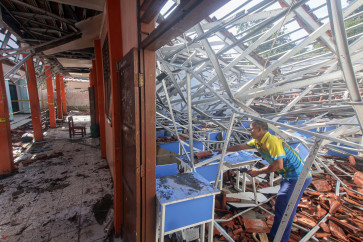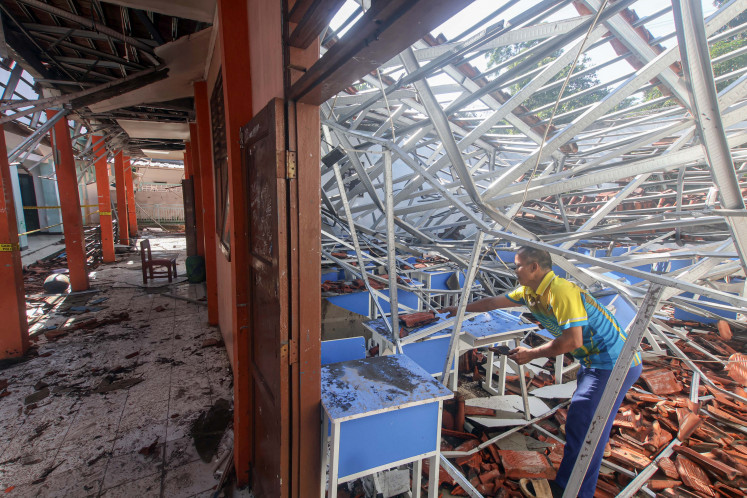Popular Reads
Top Results
Can't find what you're looking for?
View all search resultsPopular Reads
Top Results
Can't find what you're looking for?
View all search resultsHuman error blamed for air crashes
Airline passengers would be well advised to fasten their seat belts, as they are in for a disturbing ride following findings by an airline safety authority that the number of aircraft accidents is on the rise
Change text size
Gift Premium Articles
to Anyone
A
irline passengers would be well advised to fasten their seat belts, as they are in for a disturbing ride following findings by an airline safety authority that the number of aircraft accidents is on the rise.
Even brand new planes cannot ensure passengers’ safety, as human error has been the cause of most of the aircraft accidents.
According to the Transportation Ministry, the number of aircraft accidents jumped by 28.5 percent between January and Nov. 8, compared to the same period last year.
While the country has seen no major or deadly aircraft accidents since January 2007, when an Adam Air flight plunged into the sea off the coast of Sulawesi and killed all 102 on board, the report was a wake up call for the airline authority.
“We are very concerned about this issue, and we are focusing on creating a stronger culture of safety among our flight crews,” said the ministry’s airworthiness director, Diding Sunardi, on Tuesday.
According to Diding, there were 11 accidents, 16 serious incidents and 9 incidents during the period.
In 2010, there were 9 accidents, 9 serious incidents and 10 incidents. The figure is different than those issued by the National Transportation Safety Committee (KNKT) (see graphic).
The ministry defines an accident as an aircraft crash that results in death, a serious incident is defined as inflicting injury such as runway excursions (when the aircraft inadvertently goes off the runway), and an incident is when an aircraft suffers minor troubles such as a flat tire.
“The increase of both accidents and incidents — or as we usually call them, occurrences — are caused by flight crews that are not disciplined in their duties,” Diding said.
According to the KNKT, 52 percent of all the aircraft accidents between 2007 and 2010 were caused by human error.
“In Indonesia, most accidents and incidents occurred in flights that passed over mountainous areas,” Diding said.
Indonesia has seen double digit growth in its aircraft passengers over the last seven years. According to the Central Statistics Agency, 25.1 million people traveled by air during the first half of this year, up by 25.8 percent compared to the same period last year.
However, experts have said improvements in airline infrastructure and human resources have failed to catch up with the soaring amounts of passengers, opening the door even wider to possible accidents.
Aviation expert Hana Simatupang, who is also a former KNKT member, warned that unless immediate measures were taken, more major accidents were unavoidable.
“The figure shows that the situation is getting very serious. The government should monitor all [airline] operators more closely and evaluate their management systems immediately,” Hana said.
“If the number of pilots and flight crews is not enough to support more aircraft, the pilots and crews will be overworked and exhausted, and this may cause more accidents.”
To prevent accidents caused by human error, the Transportation Ministry has collaborated with Boeing and the International Civil Aviation Organization (ICAO) to train 280 flight crews and 100 Transportation Ministry officials.
Ministry spokesman Bambang Ervan said a special court for pilots was in the works as a potential disciplinary measure. (nfo)










